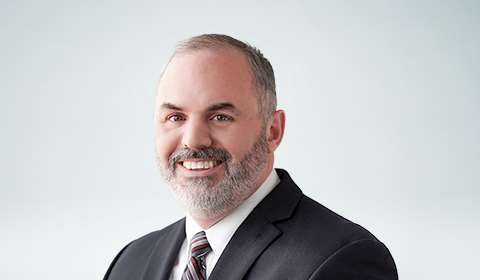It is not possible to cover all the highlights from a great industry event in one blog post, but here are a few key themes RGA attendees took away from the Society of Actuaries (SOA) Living to 100 Symposium in Orlando earlier this year.
The Risks of Aging
In the opening presentation, we heard from Dr. Nir Barzilai that for all age-related diseases (cancer, heart disease, stroke, kidney disease, Alzheimer’s, pneumonia, diabetes, etc. ), it is age itself that is the strongest risk factor. Genetic and environmental risk may determine which disease occurs first, but aging is required for the phenotype to appear.
Dr. Barzilai’s work with Ashkenzai Jewish centenarians shows that the oldest old not only live longer, they also live healthier. Interestingly, his work also shows that centenarians do not have perfect genes.
That leads to the central question we should be asking: what is aging, and what are the protective pathways involved?
Read more about Dr. Barzilai’s work here.
The Role of Cellular Senescence
In the second featured presentation, Dr. Judith Campisi hypothesized that there are a limited number of basic aging processes that drive age-related diseases. These processes include cellular senescence, one of two mechanisms that help protect against mutated cells becoming cancerous (the other being apoptosis).
Since DNA replication is not perfect, mutations start to appear as soon as cells start to divide. But we have many tumour-suppressor genes that can detect the damage or stress within a cell and cause the mutated cell to either die (apoptosis) or stop dividing (senescence).
These processes generally work very well for the first 40-50 years of life, which is why it is relatively rare to get cancer at young ages.
But this comes at a cost. Senescent cells stop dividing but they do not die, and they secrete proteins that cause inflammation. Acute inflammation is positive, because it promotes wound healing, but chronic inflammation is negative as it is the hallmark of aging tissue. Tissues that accumulate these senescent cells over the course of a life eventually degrade and lose function, leading to age-related diseases.
This idea – that what’s good for you when you’re young (in this case, a mechanism protecting against cancer) might be detrimental for you when you’re older (in this case, because it causes age-related disease) – is called antagonistic pleiotropy and was first proposed by George Wilson in the 1950s.
Senescent cells can be eliminated by using senolytic drugs, which has been demonstrated in several animal models to increase maximum lifespan:
- In the nematode worm, maximum lifespan has been extended around 10-fold.
- In the more complex fruit fly, maximum lifespan has been extended around twofold.
- In the still more complex mouse, maximum lifespan has been extended by around one-third.
The proportionate increase in maximum lifespan reduces significantly as the complexity of the organism increases. This suggests that eliminating senescent cells in humans may compress morbidity and extend healthy lifespan, rather than extend maximum lifespan.
You can watch Dr. Judith Campisi discuss some of her work here.
The TAME Study and Aging as a Treatable Condition
So aging is a complex process and is not explained by cellular senescence alone. Back to Dr. Barzilai…
Medicine has achieved incredible progress treating individual diseases. Yet as was pointed out several times during the symposium, if you stop someone dying of one disease, they will die of another. To make progress we need to think differently –the real goal should be to delay or treat ”aging” itself.
Metformin, a cheap, safe drug already in use as a treatment for diabetes, affects many different pathways involved in aging. Dr. Barzilai and his colleagues are planning a study, the Targeting Aging with MEtformin (TAME) study, aiming to test the effects of this drug on a composite outcome that includes age-related diseases (such as cardiovascular disease, cancer, and dementia) and mortality.
The hope is that, if the study shows metformin delays these age-related diseases, it will lead to an FDA indication to treat something (i.e. the composite outcome) that is equivalent to aging. At that point, pharmaceutical companies can develop further drugs for this indication, and healthcare providers can pay for patients to receive those drugs.
Read more about Metformin as a tool to target aging here.
Living Long and Living Well
Successful aging involves more than biological factors alone. We also heard about the Stanford Center on Longevity’s Sightlines project and its three pillars to living long and living well: financial security, healthy living, and social engagement.
We all know we should eat better and exercise more. And we all understand the benefits of financial security. But are you aware of the importance of social connectedness to your health and longevity?
According to Jim Toole, mortality risk for those with the smallest social networks of family, friends, neighbours, etc. is more than twice that for those with the largest social networks (2.3x for males and 2.8x for females). It turns out that investing in social capital is just as important as investing in financial capital.
Learn more about the Sightlines project here.
How Long Could We Live?
As might be expected, this was a question raised throughout the symposium. Some considered whether there was a biological limit to age; others followed a more mathematical approach.
The paper “Evidence for a limit to human lifespan,” published in Nature last year (and not without its critics) was mentioned several times. And Samuel Gbari presented his work applying extreme value theory to Belgian data, leading to an estimated ultimate age of almost 115 for males and 123 for females.
But several attendees challenged whether this was the question we should be asking. Beyond constructing life tables, does it really matter if the ultimate limit is 115, 120, or 125?
The more relevant point for most researchers – and most of society – is that if most deaths tend to occur around 85-90 years old, then we have a long way to go yet before we hit a maximum lifespan.
The aim of most research is to increase health span, not maximum lifespan. At least for now.





